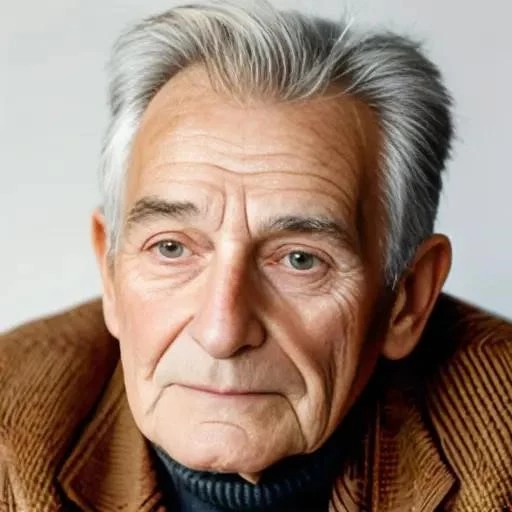Today is 09/17/2025 13:08:02 ()
Beyond the Years: How KP Oli’s Age Defines Nepal’s Enduring Political Saga!
In the dynamic and often tumultuous landscape of Nepali politics, few figures command as much attention and evoke as much spirited debate as Khadga Prasad Sharma Oli. A veteran communist leader, his career has been a tapestry woven with periods of profound influence, strategic maneuvering, and popular appeal. As of September 2025, approaching his 74th birthday in February 2026, the question of his age often surfaces, yet Oli himself robustly dismisses such concerns, asserting his unwavering health and continued vitality. This resilience, a hallmark of his long journey, undeniably shapes the ongoing narrative of Nepal’s political future, proving that experience, rather than mere chronology, truly dictates leadership.
Oli’s journey from a humble background in Tehrathum to the highest office in the land is nothing short of remarkable, illustrating a deep-seated commitment to public service and an unyielding political will. Having served as Prime Minister on three separate occasions—from 2015-2016, 2018-2021, and most recently from 2024-2025—his stints have been characterized by bold policy decisions, assertive nationalist rhetoric, and a consistent drive to steer Nepal towards greater stability and prosperity. Despite recent challenges, including a wave of Gen Z-led protests that saw his latest resignation, his political acumen and enduring presence continue to cast a long shadow, influencing both established parties and emerging voices within the Himalayan nation’s complex democratic framework.
| Category | Details |
|---|---|
| Full Name | Khadga Prasad Sharma Oli |
| Commonly Known As | K. P. Sharma Oli, K. P. Oli |
| Date of Birth | February 22, 1952 |
| Current Age (as of Sep 2025) | 73 years old (turning 74 in Feb 2026) |
| Place of Birth | Iwa, Tehrathum District, Nepal |
| Family Background | Eldest son of Mohan Prasad Oli (father) and Madhumaya Oli (mother). Mother died at age four. Has one sister, Bishnu Devi Siwakoti, and a younger brother and three younger sisters from his father’s second marriage. |
| Political Affiliation | Communist Party of Nepal (Unified Marxist-Leninist) ー Chairman |
| Key Political Roles |
|
| Notable Characteristics | Known for nationalist rhetoric, strong leadership, and resilience. |
| Official Website (Reference) | Communist Party of Nepal (UML) Official Website |
Indeed, Oli’s political journey has been anything but smooth. From dropping out of school to being jailed at 22 for the murder of a farmer, Dharma Prasad Pokharel, his early life was marked by struggle and radicalization, forging a leader hardened by adversity. These experiences, though controversial, undeniably shaped his pragmatic yet unwavering approach to governance. His return to power in 2024 for a third term, only to resign amidst widespread protests in 2025, underscores the volatile nature of Nepali politics and his central, often polarizing, role within it. The recent Gen Z-led demonstrations, fueled by concerns over social media bans and corruption, represented a powerful new wave of civic engagement, compelling changes at the highest echelons of government.
Despite these tumultuous shifts, Oli’s influence remains palpable, a testament to his strategic prowess and the deep loyalty he commands within his party. His ability to navigate complex alliances, often balancing relations with neighboring giants India and China, has been a defining feature of his premierships. As Dr. Anya Sharma, a leading political analyst specializing in South Asian affairs, observed, “Oli is a political survivor, possessing an almost uncanny ability to re-emerge stronger after setbacks. His experience, accumulated over decades, provides a unique lens through which to view Nepal’s evolving geopolitical position.” This perspective highlights how his seasoned leadership, even in periods of opposition, continues to guide the discourse.
The conversation surrounding KP Oli’s age is less about his physical capabilities and more about the generational shift occurring within Nepal. While younger leaders like Rabi Lamichhane and Balen Shah are emerging, galvanizing a new generation with anti-corruption platforms, Oli’s enduring presence serves as a bridge, connecting Nepal’s revolutionary past with its democratic future. His dismissal of health concerns—”Right now, I am not sick. No one should rush things. No need to talk about my age and health”—reflects not just personal conviction, but a deeper assertion of his continued relevance in shaping national destiny. This unwavering confidence, often perceived as defiance, has become a cornerstone of his public persona, reinforcing his image as an indomitable force.
Looking ahead, the future of Nepali politics, while undoubtedly facing new challenges and embracing fresh voices, will continue to be informed by the legacies of leaders like KP Sharma Oli. His storied career, punctuated by both triumphs and controversies, offers invaluable lessons in resilience, political strategy, and the complexities of nation-building. By integrating insights from his extensive tenure, future leaders can forge a path forward, ensuring that Nepal remains a vibrant democracy. Oli’s journey, far from being a tale of an aging politician, is a compelling narrative of a leader whose enduring spirit and profound experience continue to shape the very fabric of his nation, promising a future where wisdom and dynamism coalesce for collective progress.

